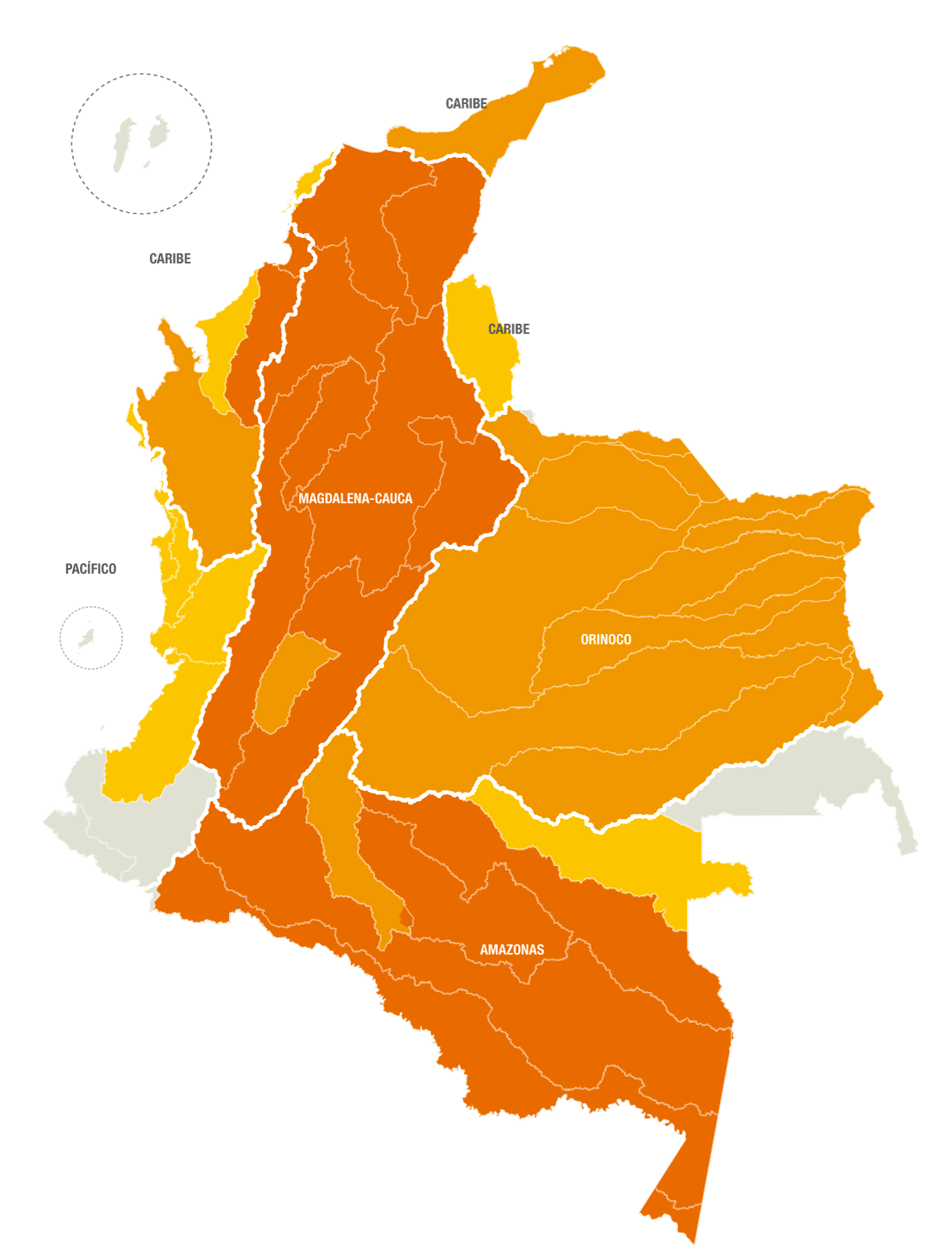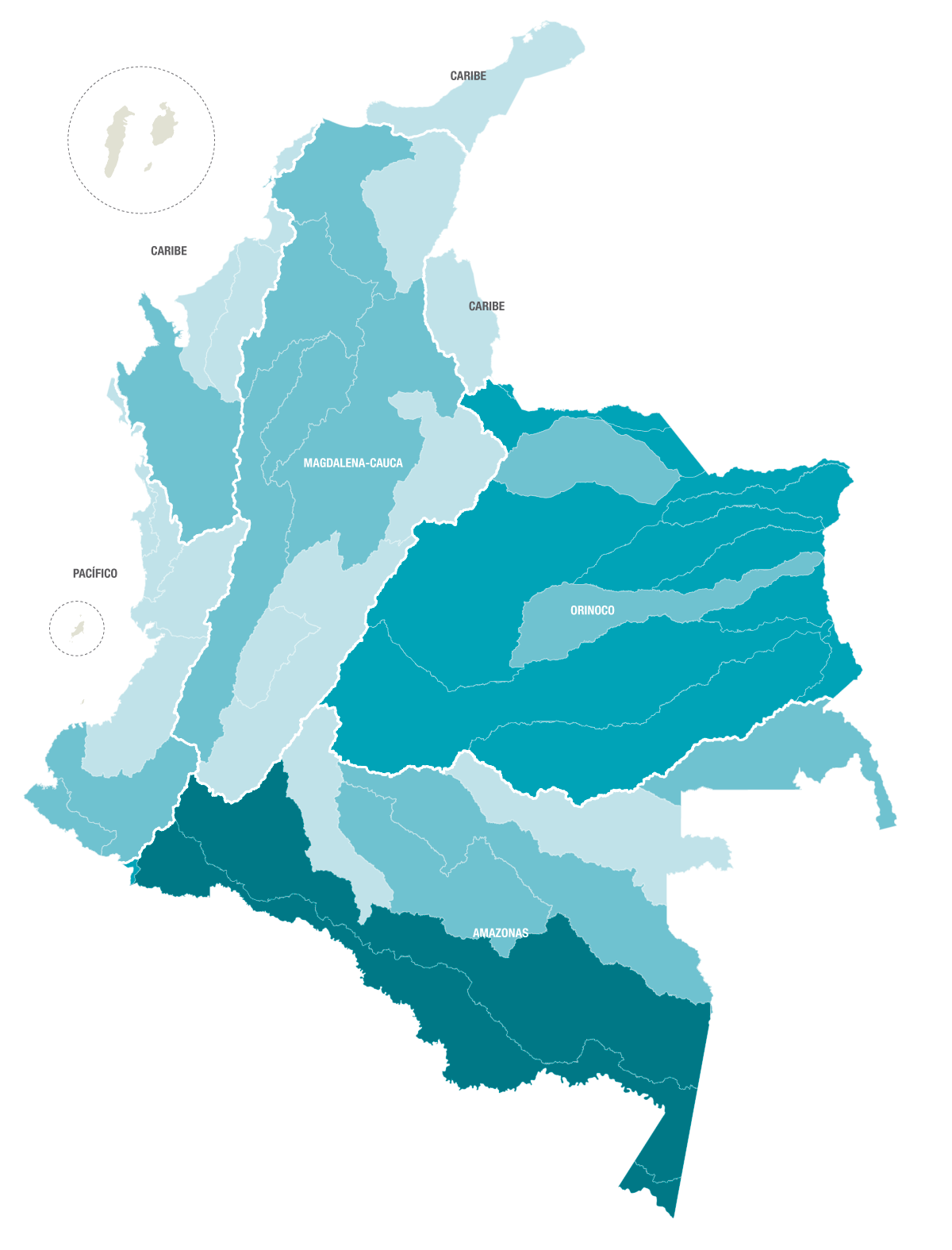An important part of fishery production obtained from areas of high provision depends on threatened species. The major pressures affecting fishery resources in these areas must therefore be controlled to ensure their sustainability.
Aquatic ecosystems are a great source of biodiversity and ecosystem services of provision, nutrient cycle regulation, scenic well-being, and recreation1.Around the world, 58.7% of fishing as a food resource comes from natural environments 2, In Colombia, fisheries produced 79,825 tons in 20113 As an economic activity for sustenance and food security, this production benefits 150,000 families. Of these families, 40% depend on fisheries in continental wetlands and from this activity receive an income that is approximately equivalent to a minimum monthly salary 3,7.
In Colombia, the richness areas of fishes for consumption (ARI for its initials in Spanish) show the fish diversity of areas sheltering species that may be exploited. These areas are diverse and varied as the result of a great fish species richness that is associated with the evolutionary history of the basins, a variety of ecological niches and the productivity of the country's continental freshwater systems. The basins of the Amazonas and Orinoco Rivers, for example, have high species richness in regions of large tributaries such as the Amazonas, Putumayo, Caquetá, Orinoco, Guaviare, Meta, and Arauca Rivers5,8, making them internationally renowned foci of high fish diversity.
However, ARIs are not proportional to the provision areas of fishes for consumption (API for its initials in Spanish), the areas that contain the major freshwater systems from which the country is provided with fishery resources9. It should be mentioned that data for APIs only derives from the collection points that are considered to be most important, so not all collection points in the country are included. The highest levels of catch per unit effort and high fishing production in APIs are found in river floodplains, for these are environments that are suitable for fish reproduction, breeding, and protection10.
Of the 173 species consumed9, 81 are classified in a threat category according to the criteria established by the International Union for Conservation of Nature (IUCN)10. The reduction of fishing production by 60% in the last 50 years has been caused partly by resource overexploitation, degradation of aquatic systems, introduction of invasive species, and climate change effects5,7,8 For example, 84% of the fishing resources in the Magdalena-Cauca basin depend on threatened species, making the conservation of fishes a priority.
The trend of fishery resources in Colombia is predicted to be generally unsustainable in a medium term and would cause social and environmental conflicts related to food security, ecosystem deterioration, and loss of biodiversity11. Such scenario could be assuaged by an effective management based on alternative and sustainable fishery production models that include native species, and avoid both the overexploitation of threatened species and biological invasions.

